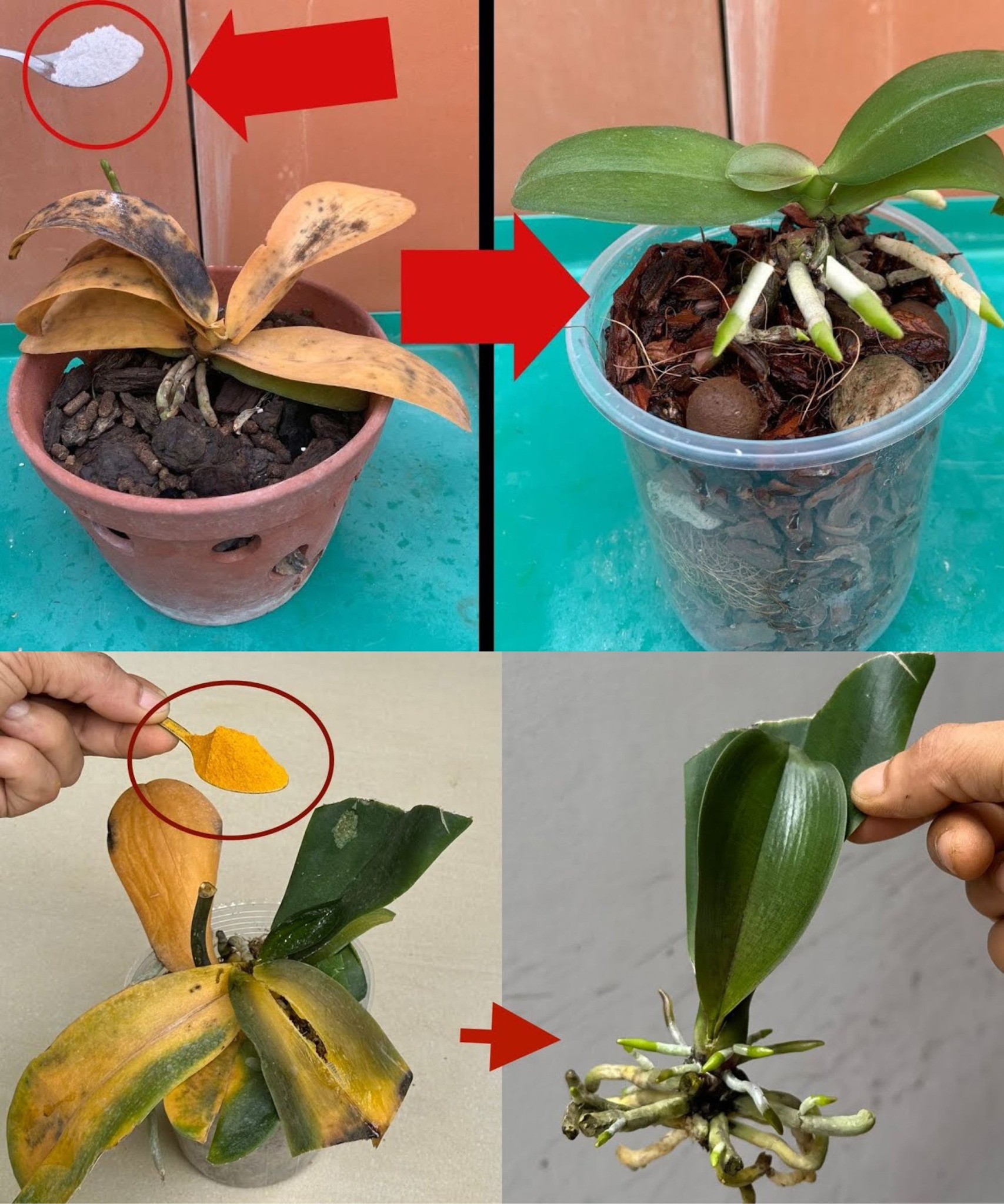
Reviving Your Ailing Orchid: Quick Tips for a Healthy Comeback”
Is your orchid showing signs of distress with yellowing leaves and musty roots? It’s essential to take action promptly. But where do you start? In this guide, we’ll help you interpret your plant’s symptoms and provide the necessary remedies.
Before you jump into rescue mode, it’s crucial to diagnose the issue your orchid is facing. Here are the primary symptoms of a struggling orchid:
- My orchid has become limp and soft:
- This condition may result from overwatering.
How to revive it:
- Allow excess water to drain by upending the pot.
- Examine the roots; trim any rotten, brown, or blackened portions.
- Remove saturated soil and chips.
- Repot the orchid in dry soil in a pot with drainage holes.
Remember that orchids, despite being tropical plants, don’t need excessive watering. It’s advisable to mist them every two days during dry periods, such as summer or winter when indoor heating dries the air. Otherwise, watering once a week is sufficient.
- My orchid’s leaves are turning yellow and dry:
- If your Phalaenopsis orchid’s leaves are turning yellow and dry, it’s a sign of water deficiency. You may also notice gray roots.
How to revive it:
- Give your orchid a bath:
- Fill a basin with water.
- Submerge the pot for 45 minutes.
- Allow it to drain.
- Return the plant to its spot.
Orchids, with their thick leaves, are sometimes mistaken for succulents, leading to under-watering. The right watering frequency depends on the temperature and humidity in your home but typically ranges from once to twice a week.
- My orchid’s leaves are turning yellow:
- Yellowing leaves can indicate suboptimal living conditions, such as excessive heat, improper watering, illness, or direct sunlight.
Check these factors to prevent the situation from worsening. Pay particular attention to the possibility of overwatering, which often results in water stagnation in the pot.
- My orchid has white spots:
- These are likely sunburn marks due to direct sunlight exposure, which orchids dislike.
The solution is to relocate your orchid to a bright spot without direct sunlight. Trim severely damaged leaves if needed.
- My orchid has lost all its leaves:
- The absence of leaves is a concerning sign and can result from various factors, including pests, diseases, heat stress, or excessive watering. If it’s just finished flowering, repotting and fertilizing might help.
In cases of complete leaf loss with only the core remaining, there’s a possibility of revival if the roots are healthy.
- My orchid has tiny white creatures on the leaves:
- These are mealybugs, and they can quickly infest nearby plants if not addressed.
To save your orchid:
- Isolate the affected plant.
- Rinse it under the tap to remove excess insects.
- Use a cotton ball soaked in white vinegar to swab the remaining mealybugs.
- Don’t forget to check under the leaves and between the roots.
- Repeat every 4 days to eliminate all eggs and larvae. Check surrounding plants for contamination.
Why I Take My Orchids Outside: To rejuvenate your orchids and provide them with conditions closer to their natural habitat, consider placing them outdoors from late May to late September. Ensure they are positioned in the shade, such as beneath taller plants or bushes, allowing their leaves to remain sheltered from direct sunlight. During this time, they can absorb moisture from dew, eliminating the need for regular watering. As the weather cools in the fall, bring them back indoors, and you may be pleasantly surprised with new stems and buds after their “vacation.”